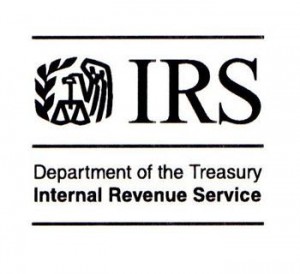 The IRS has now issued Notice 2013-61, which provides procedures for requesting refunds on employment taxes paid with respect to spousal benefits for same-sex spouses. Some highlights:
The IRS has now issued Notice 2013-61, which provides procedures for requesting refunds on employment taxes paid with respect to spousal benefits for same-sex spouses. Some highlights:
- Refunds are available only with respect to married same-sex couples, not same-sex couples who are in a civil union or domestic partnership but not married. However, they are available to all same-sex couples whose marriage was legally recognized in the jurisdiction in which performed, even if not recognized in the jurisdiction of the employee’s domicile or of the relevant employment. Thus, for example, an employee who lived in Vermont, had a civil union in Vermont, but got married in Massachusetts would be covered, as would an employee who lived in Texas but got married in Connecticut.
- Refunds can be claimed for all years within the statute of limitations. Assuming returns were filed on a timely basis, this means that refunds can be claimed for 2011 through 2013.
- The IRS recognizes that employees did not typically make elections of pretax benefits for a same-sex spouse, because the IRS position at the time was that such elections were unavailable. Consequently, the Notice provides that if an employee made a pre-tax salary-reduction election for health coverage under a section 125 cafeteria plan sponsored by an employer and also elected to provide health coverage for a same-sex spouse on an after-tax basis under a group health plan sponsored by that employer, an affected taxpayer may treat the amounts that were paid by the employee for the coverage of the same-sex spouse on an after-tax basis as pre-tax salary reduction amounts.
- For most employees, the benefits giving rise to a claim will be fringe benefits (e.g., spousal health or cafeteria plan benefits), which will be retroactively recharacterized as pretax. However, the Notice deals also with claims for reimbursement of federal unemployment (“FUTA”) taxes on wages for the services of an individual who works for his or her spouse in a trade or business.
- The procedures apply only if there has been an overwithholding and overpayment of tax. Thus, for example, they do not apply to FICA taxes in the case of an employee whose wages, not counting the spousal benefits, were over the FICA wages base.
- For 2013, the employer can simply repay or reimburse the employee for overwithheld income and employee Social Security and Medicare (“FICA”) taxes, and then reduce fourth-quarter withholding and tax payments to reflect the overwithholding and payment for previous quarters.
- Alternatively, if the employer does not make refunds of excess employee FICA taxes until after the end of the year, it can use a Form 941X to claim the refund of FICA taxes, provided that it obtains each employee’s written statement confirming that the employee has not made any previous claims (or the claims were rejected) and will not make any future claims for refund or credit of the amount of the overcollected FICA tax. The employer should write “WINDSOR” in dark, bold letters across the top margin of page 1 of Form 941-X. However, this procedure will not enable the employer to claim overwithheld income taxes. In such case, the employee would receive credit for the overwithheld income taxes in preparing the 2013 return.
- For years prior to 2013, the employer can elect to file Forms 941-X only for the last quarter of each year, and to claim all of the overpayments of FICA and FUTA (but not income) taxes on the last quarter’s return. However, the Forms 941-X can be filed only if the employer a) files Forms W-2c, b) repays or reimburses employees for the overwithheld FICA taxes, and c) obtains each employee’s written statement confirming that the employee has not made any previous claims (or the claims were rejected) and will not make any future claims for refund or credit of the amount of the overcollected FICA tax.
- Nothing obligates an employer to obtain refunds of taxes. If the employer elects not to claim the refunds, employees can claim refunds of the employee portion of FICA taxes.
- The simplified procedures are voluntary. An employer that prefers can follow the usual procedures for obtaining refunds of taxes.
Footnotes:
1. An employer repays the employee by direct payment to the employee; an employer reimburses an employee by applying the amount of the overcollection against the employee FICA tax which attaches to wages paid by the employer to the employee.
An employer repays the employee by direct payment to the employee; an employer reimburses an employee by applying the amount of the overcollection against the employee FICA tax which attaches to wages paid by the employer to the employee.
